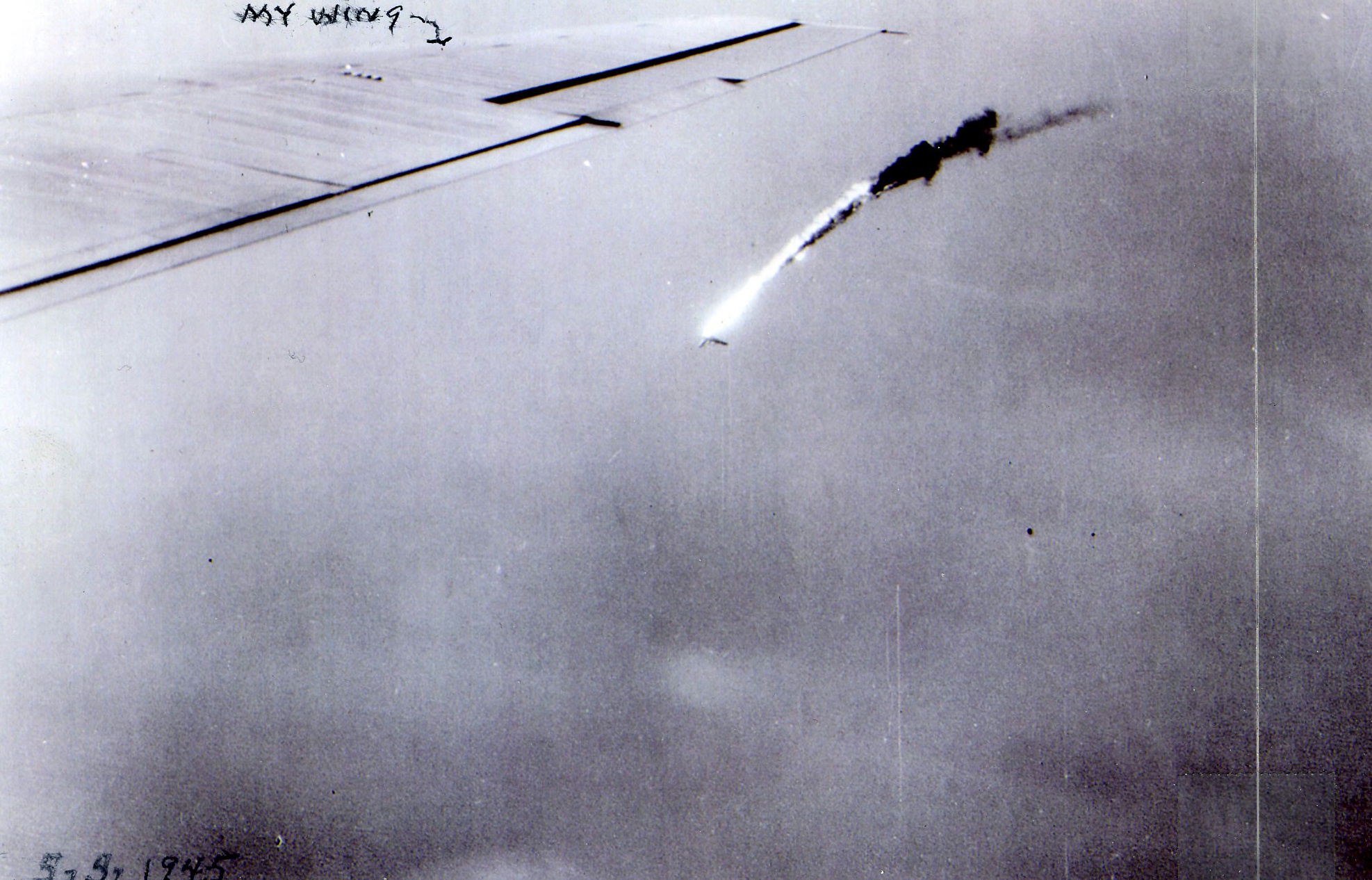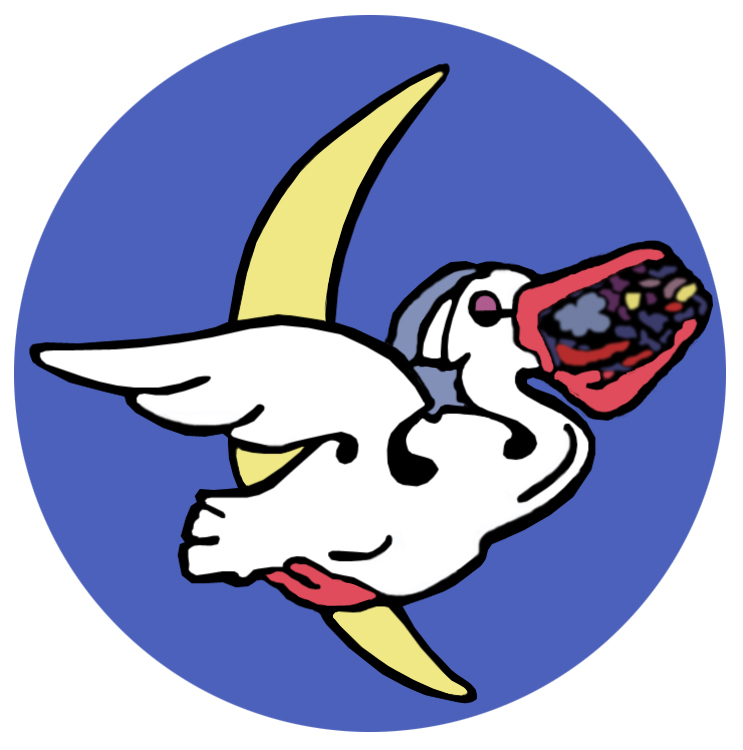The 6th Bomb Squadron
Of the 12 original B-29s in the 6th Bomb Squadron, only three survived (a 75% loss ratio). Included in those losses was a plane commanded by Ralph Miller. Miller had flown many missions as a co-pilot, but took an opportunity to command his own plane. On the first mission as a commander, Miller and his 10 crew members were lost as our squadron bombed Tachiarai, Japan. Fire reached his wing tanks and an explosion blew the left wing off. The cause was heavy Japanese Zero fighter attacks. This photo appeared in Life Magazine and was taken by right gunner G. Marano of Harold Lang's crew. Lang's right wing is in the foreground. MIller had wanted to reach a submarine 25 miles off the shore of Japan and ditch his aircraft into ocean. It did not work. Lang lost both of his wing men on this day's mission within 15 minutes of each other. Miller was on the right and Marvin Watkins was on the left of Lang's plane. Watkins was also hit by Zeros and rolled over the top of Lang's B-29. The picture below is of Ralph Miller's plane going down.
Lang's plane received 356 bullet holes in its fuselage and the left wing had to be completely changed out. He and his crew were able to make an emergency landing on Iwo Jima. They never would have made it back to Guam, their home base, as the plane was on fire. As they landed, crew members were bailing out of the plane before it came to a complete stop. Enemy forces still occupied areas near the landing field and the crew received enemy fire while exiting the plane.
Stationed on the island of Guam, the flight crews lived in tents until they could build their own quonset huts. B-29 missions over the Japanese islands took 15 to 16 hours round trip from Guam to Japan and back. Debriefings followed their return to Guam. The planes would fly just above water (from 100 to 1,000 feet above the sea) to avoid radar. During day missions they would assemble before reaching Japan into formations for the bombing runs. In the night, every plane was on its own, as no lights were deployed so not to attract enemy fire. Planes would climb from 5,800 to 9,000 feet before releasing their bombs over areas that appeared not to be yet burning. A B-29 would hold 184 gasoline jelly bombs of 100 pounds each. It could also hold forty 500 pound bombs or four 2,000 pound bombs.
The planes would fly as closely together as possible when they were in formation so Japanese fighter planes could not fly between the B-29s. Lang still vividly remembers. He noted that, "At times the Japanese Zeros would fly so close that we B-29 pilots could see the masks of the Zero pilots as they went past."
6th Squadron Missions
Lang and his crew flew a total of 35 bombing missions together over the Japanese islands. The following is a list of the missions:




